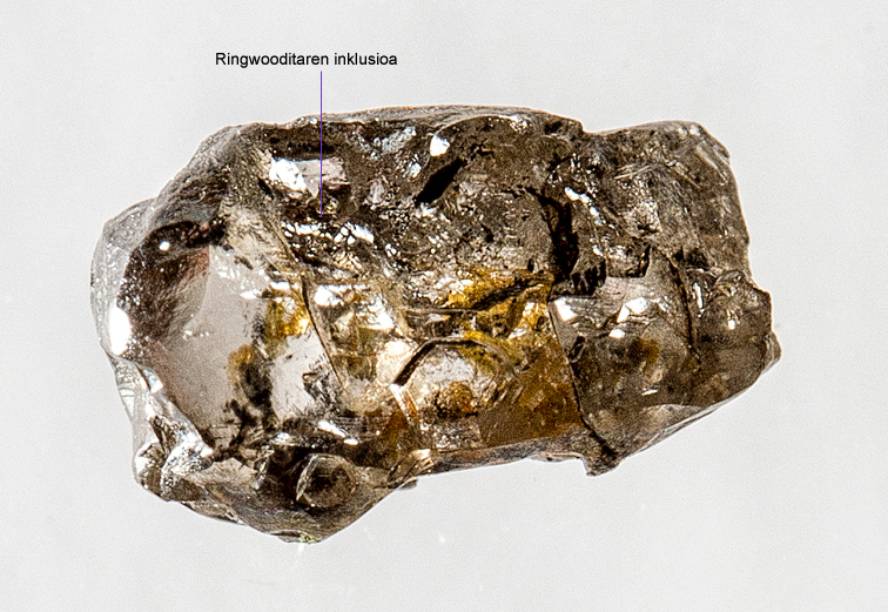Proof of the water of the mantle trapped in a diamond

The diamond was found in the Brazilian district of Juina (statue of Mato Grosso) and contained the first material test in favor of the general hypothesis on the composition of the transition layer of the mantle. According to this hypothesis, the mantle layer of depths between 410 and 660 kilometers is rich in water, as this indicates the behavior of the seismic waves that cross the layer. One of the deposits of this water would be the ringwoodite, a form of olive that is formed as a result of very high pressures.
Australian geologist Alfred Ringwood first proposed this hypothesis in the 1950s, but so far there has never been a sample of ringwoodite arising in the mantle of the earth's surface. According to the hypothesis, high pressures in the transition area provoke a change of shape of the olive tree, main component of the upper layer of the mantle, to create forms of ringwoodite and wadsleita; the crystals of these forms would store water, and the fact that this layer of mantle was aqueous would explain the sudden change of behavior of the seismic waves in this area. The hypothesis has a validity of 60 years and during that time scientists have found evidence that support it: the ringwoodite was first detected in meteorites subjected to high pressure shocks, and subsequently synthesized in the laboratory both ringwoodite and wadsleita, and it was proved that its crystal structures could store water.
Precious mineral and fleeting
There was no material proof that I had been in Mantua, and that is what researchers at the University of Edomontón have now presented in the journal Nature. The presence of OH groups in the sample has been detected by Raman spectroscopy as a water indicator. Measurements indicate that water represents 1.4% of the ringwooda mass found. (assimilable to the values provided by the crystals synthesized in the laboratory). In an analysis article published in the journal Nature by the geologist of the University of Bayereuth, Hans Keppler, states that “the water mass of all the oceans of the Earth will be 1,4,1021 kg in the transition layer of the mantle if the amount of water in the sample was extrapolated to the entire layer between 410 and 660 km. However, Keppler himself and the authors of the discovery warn that this extrapolation is not possible. These diamonds are the result of intense volcanic activity related to aqueous rocks, an activity that is not habitual. This can cause only certain regions of the mantle in which diamonds have been formed to be aqueous.
However, it is a great discovery for geologists. If it is difficult to find diamonds, it is more difficult to find a high-pressure olive shape “trapped” in a diamond. And it is that “by lowering the pressure according to the diamond it is approaching from the mantle to the surface, the normal thing is that the ringwoodite is again an olivine,” explains Keppler. “Even though the geophysicists were convinced that there was the ringwoodite of the mantle, no one saw it to date, and the majority, I included, did not believe they were never going to see such a sample,” he said. The author of the discovery, Grahan Pearson, on the website of the journal Nature, has stated that the sample is so appreciated and small that it must think well to what extent: “The sample has only 40 micrometers, which means that we can only perform one or two more analyses.”





